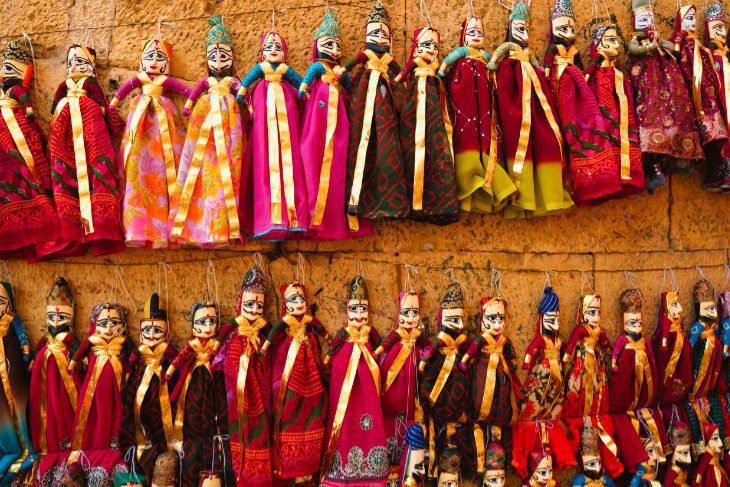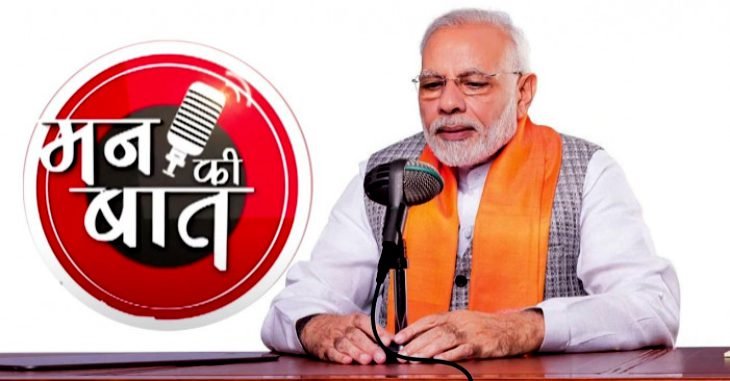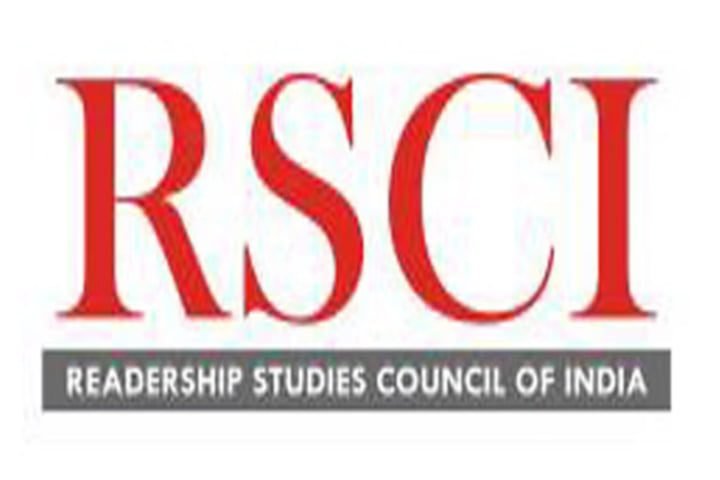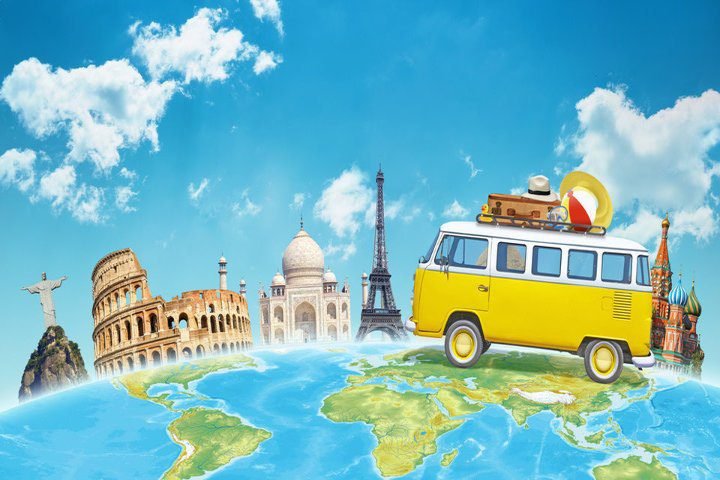In the modern world, media inform, entertain, educate, set social agenda, shape our political system, form public opinion, support public demands, reveal social realities, transmit culture, create new trends and propagate cultural values. From traditional media rooted in ancient folk traditions to the ever-evolving new media landscape, we are witnessing a remarkable journey of various forms of mass media in India.
In This Article
Types of mass media in India
- Traditional Media/Folk Media
- Print Media
- Electronic Media (Television and Radio)
- Digital Media
Traditional Media: Preserving Cultural Heritage


- Traditional media are the oldest form of media and are connected with the folk-art forms of the society. Traditional media connect people with their rich heritage and tell the stories of the past to the present generation.
- The folk art forms are closely related to the rituals of rural and marginalized groups. These art forms, including songs, dances, music, and theatre, have served as communication vehicles, enlightening and entertaining people through oral traditions.
- The traditional media are communication channels that reflect people’s culture. It has more influence on public opinion than other form of media.
In India, traditional media channels reflect the nation’s diverse cultures, languages, and traditions. They hold a unique position in shaping public opinion, often reaching where modern media cannot. For instance, in rural India, traditional storytelling, known as ‘Katha Vachak,’ has been instrumental in educating and disseminating information among communities. These storytellers use folklore and narratives to convey messages that resonate with local audiences.
One classic example is the “Ram Leela,” a traditional form of theatre that narrates the epic Ramayana. These performances not only entertain but also convey moral lessons and societal values. They serve as a powerful tool for both cultural preservation and mass communication.
Print Media: The Mighty Press


Print media has been a potent force in India’s journey towards progress and democracy. It democratized knowledge, making education accessible to the masses. This revolution began with the proliferation of newspapers, magazines, periodicals, and books. The total number of registered publications in India as of March 31, 2022, was 1,46,045, including 20,821 newspapers and 1,25,767 periodicals[i].
Prominent newspapers like “The Times of India,” “The Hindu,” and “The Indian Express” have played pivotal roles in shaping public opinion and encouraging debates on social and political issues. They have been instrumental in exposing social concerns, mobilizing public opinion, and catalyzing movements for reform.
For instance, during India’s struggle for independence, newspapers like “The Hindustan Times” and “Young India” provided a platform for leaders like Mahatma Gandhi to communicate their vision and rally the masses. Gandhi’s famous quote, “You must be the change you want to see in the world,” was widely disseminated through print media, inspiring millions.
The press plays a vital role in exposing social concerns, encouraging popular discussions and debates, mobilizing public opinion and generating political and social reform movements. Newspapers are crucial for the survival of indigenous cultures and ethnic traditions. Exposure in newspapers is often a pre-condition for public acceptance.
Print media in India has immensely contributed to modern living through various supplements on topics ranging from home care and jobs to fashion and cuisine. It’s also essential to recognize the power of print media to shape societal norms and expectations. Colourful advertisements often depict an idealized version of beauty, leading some individuals to chase unrealistic standards, which can result in unhealthy lifestyles.
Electronic Media: Television’s Transformative Impact


Television, a key player in electronic media, entered Indian households in 1959 on an experimental basis. Its introduction aimed to explore its potential in community development and formal education. Over time, television became a mass medium that profoundly influenced the ordinary person. Because of this, television is used in a planned manner to motivate people to participate in developmental programs.
One of the notable initiatives was the “Krishi Darshan Program”, launched by the Delhi Television Centre in 1967 under the guidance of Dr. Bikram Sarabhai and Prof. R. S. Swaminathan. This program popularized modern agricultural techniques through television, benefiting farmers nationwide.
India’s space agency, ISRO, has also leveraged space technology for education and development with projects like Educational TV (ETV), SITE (collaboration with NASA), the Kheda project, and the Countrywide Classroom (CWC) project. These initiatives have extended the reach of education and information to even the remotest corners of India.
Electronic media’s impact on contemporary Indian society is multifaceted. Due to its audio-visual nature, it significantly influences people’s behaviour and perceptions. However, it’s essential to acknowledge that the media often sensationalizes information to increase its appeal. The emphasis on materialism and consumerism is prevalent in media content, which can shape societal values.
Moreover, sex and violence in media content can negatively influence immature minds, leading to unhealthy behaviours and attitudes. As a result, activities such as reading, outdoor play, and social interactions have taken a backseat in many households, with evenings dominated by television viewing.
The influence of electronic media on cultural and moral values cannot be understated. Audiences often internalize the messages conveyed by media, blurring the lines between reality and fiction, which can profoundly affect behaviour, particularly among young individuals.
Radio: India’s Storyteller


In a socially and culturally diverse country like India, radio has been a faithful companion to millions since its inception, narrating stories, sharing news, and transcending boundaries to reach the remotest corners of India. With its vast linguistic and cultural diversity, radio is a unified force binding the nation through the spoken word and music.
1923, radio broadcasting arrived in India when the Radio Club of Bombay began regular broadcasts. It wasn’t long before the All India Radio (AIR), also known as Akashvani, was established in 1936, becoming one of the largest public broadcasting organizations in the world. Akashvani broadcasts in over 200 languages and dialects, ensuring that every Indian can access information and entertainment regardless of location or background.
One of the defining moments in the history of Indian radio was during the freedom struggle. Radio played a pivotal role in disseminating the messages of leaders like Mahatma Gandhi and Jawaharlal Nehru to the masses. Gandhi’s ‘Quit India’ speech in 1942, broadcast on All India Radio, galvanized the nation and became a defining moment in India’s struggle for independence.
Radio’s influence extends beyond news and politics. It has been a cultural custodian, preserving and promoting traditional music, folklore, and storytelling. Vividh Bharati, an iconic radio channel, has been a repository of India’s musical heritage, showcasing classical, folk, and contemporary music to its vast audience.
Radio has recently embraced digital technology, allowing for greater interactivity and audience engagement. Online streaming and podcasts have breathed new life into this age-old medium, attracting a new generation of listeners.
Radio’s enduring appeal lies in its intimacy. Unlike other mass media, radio is a companion that speaks directly to individuals, providing solace, information, and entertainment. Whether it’s the soothing voice of a beloved RJ (Radio Jockey) or the familiar jingle of a commercial, radio has a special place in the hearts of Indians.
In India, radio is not just a medium; it’s a storyteller, a cultural ambassador, and a bridge that connects the past with the present. It continues to echo the diverse voices of India.
“Mann Ki Baat”: The People’s Voice on the Airwaves


In the vibrant medley of radio programs in India, one show has captured the nation’s attention and imagination – “Mann Ki Baat.” This radio program, hosted by Prime Minister Narendra Modi, has become a unique and influential platform for connecting with millions of Indians.
Launched on October 3, 2014, “Mann Ki Baat” embodies participative governance and communication, a direct conversation between the Prime Minister and the citizens of India.
The program is broadcast in multiple languages, reaching even the country’s remotest corners. Prime Minister Modi addresses the nation on a wide range of topics, from societal issues to cultural celebrations, scientific achievements, and individual stories of resilience. However, its interactive element makes “Mann Ki Baat” unique. It’s not a one-way broadcast but a dialogue. The Prime Minister actively seeks the citizens’ suggestions, stories, and ideas, creating a sense of collective ownership.
For instance, during the COVID-19 pandemic, “Mann Ki Baat” emerged as a crucial platform to disseminate information, share experiences, and boost morale. The Prime Minister’s messages of solidarity, gratitude to frontline workers, and motivational stories of ordinary citizens battling the virus resonated deeply with the listeners.
“Mann Ki Baat” is a shining example of how this medium can be harnessed to connect with the people, listen to their concerns, and chart the course of the nation’s future.
Digital Media: A Paradigm Shift in Communication


Digital media is a transformative force in the realm of mass communication. It encompasses various technologies, including websites, blogs, podcasts, video games, virtual worlds, wikis, mobile devices, interactive televisions, and email. In India, digital media has ushered in a new era of communication, breaking down traditional barriers.
One of the most significant shifts digital media brings is content creation and distribution democratisation. Unlike traditional media, where a few gatekeepers control the narrative, digital media empowers individuals to become content creators and disseminators. Social media platforms like Facebook and Twitter have given voice to the masses, enabling them to share their perspectives and engage in dialogues.
For example, during the 2011 anti-corruption movement in India led by Anna Hazare, social media played a pivotal role in mobilizing support and organizing protests. The hashtag #IndiaAgainstCorruption trended on Twitter, and Facebook groups became hubs for discussions and organizing rallies. This marked a paradigm shift in how mass movements were catalyzed and sustained.
Despite its democratizing potential, digital media also faces representation, access, ownership, and control challenges. While many in developing countries may have access to mobile phones or the internet, disparities in access to quality information persist. Moreover, mighty digital media platforms like Facebook and Google often create expansive ecosystems, including news, social media, advertising, and entertainment. This consolidation can limit the diversity of voices and content.
Conclusion: The Ongoing Evolution of Mass Media in India
Mass media in India have evolved with the nation’s growth and development. The communication landscape continually shifts from the traditional press that preserves cultural heritage to print media that has been a catalyst for change, from electronic media’s transformative impact to new media’s democratizing potential.
In the Indian context, media profoundly influences society, shaping opinions, values, and behaviours. While it has facilitated education, information dissemination, and societal progress, it has also posed challenges in sensationalism, superficiality, and the blurring of reality and fiction.
As India continues to march forward in the 21st century, the role of mass media remains critical. Journalists, media organizations, and society must navigate this evolving landscape responsibly, ensuring that the power of media is harnessed for the greater good to educate, inform, and inspire while upholding the principles of democracy and truth.
[i] Press in India Highlights https://rni.nic.in/all_page/press_india.aspx




